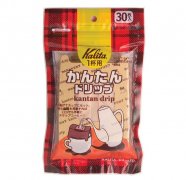Correct understanding of caffeine and rational drinking of coffee
What is caffeine?
Caffeine: (Caffeine) is an alkaloid extracted from tea and coffee fruits. Moderate use of caffeine can dispel fatigue and excitatory nerves. Coffee, tea, soft drinks and energy drinks with caffeine are very popular. Therefore, caffeine is also the most commonly used psychotropic drug in the world. In North America, 90% of adults use caffeine every day. Many natural sources of caffeine also contain a variety of other xanthine alkaloids, including cardiotonic theophylline and theobromine, as well as other substances such as tannic acid.

(chemical formula C8H10N4O2 of caffeine)
The main source of caffeine in the world is coffee beans (the seeds of coffee trees), which are also the raw materials of coffee. The caffeine content in coffee largely depends on the variety of coffee beans and the method of making coffee, and even the caffeine content of coffee beans in the same tree varies greatly. Generally speaking, the amount of caffeine in a cup of coffee ranges from 40 mg in espresso to 100 mg in espresso. Deep-roasted coffee generally contains less caffeine than light-roasted coffee because roasting reduces the amount of caffeine in coffee beans. Arabica coffee usually contains less caffeine than medium-fruit coffee. Coffee also contains trace amounts of theophylline, but not theobromine.
Tea is another important source of caffeine. The caffeine content of each cup of tea is generally only half that of each cup of coffee, depending on the intensity of tea production. Certain varieties of tea, such as black tea and oolong tea, contain more caffeine than other teas. Tea contains a small amount of theobromine and slightly higher theophylline than coffee. The making of tea has a great influence on tea, but the color of tea can hardly indicate the amount of caffeine. The caffeine content of Japanese green tea is much lower than that of many black teas, such as Masayama race tea, which contains little caffeine.
Chocolate made from cocoa powder also contains a small amount of caffeine. Chocolate is a weak stimulant, mainly due to theobromine and theophylline contained in it. A typical 28g milk chocolate has about the same caffeine content as decaffeinated coffee.
Important Notice :
前街咖啡 FrontStreet Coffee has moved to new addredd:
FrontStreet Coffee Address: 315,Donghua East Road,GuangZhou
Tel:020 38364473
- Prev

Kantan Drip, Kalita New Portable Disposable Paper Filter Cup
KANTAN means easy in Japanese, and these little single-cup single-use drippers live up to their name! Remove one KANTAN DRIP from the package, fold down each side, pop open the filter basket, and add between 12 to 16 grams o
- Next

How does the Philharmonic pressure come from? who invented the Philharmonic pressure?
AeroPress was officially released by American AEROBIE Company in 2005. It was listed and aroused strong repercussions because of its advantages such as easy to use, high efficiency and delicious coffee. The new coffee-making apparatus was invented by Alan Adler, a mechanical engineering lecturer at Stanford University, who holds more than 40 patents in the United States and other countries. Aiole pressure is a kind of manual cooking.
Related
- Beginners will see the "Coffee pull flower" guide!
- What is the difference between ice blog purified milk and ordinary milk coffee?
- Why is the Philippines the largest producer of crops in Liberia?
- For coffee extraction, should the fine powder be retained?
- How does extracted espresso fill pressed powder? How much strength does it take to press the powder?
- How to make jasmine cold extract coffee? Is the jasmine + latte good?
- Will this little toy really make the coffee taste better? How does Lily Drip affect coffee extraction?
- Will the action of slapping the filter cup also affect coffee extraction?
- What's the difference between powder-to-water ratio and powder-to-liquid ratio?
- What is the Ethiopian local species? What does it have to do with Heirloom native species?

